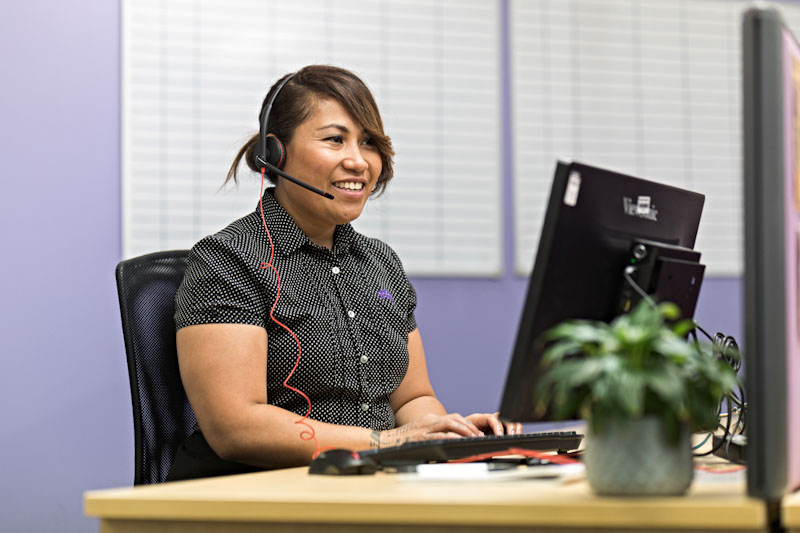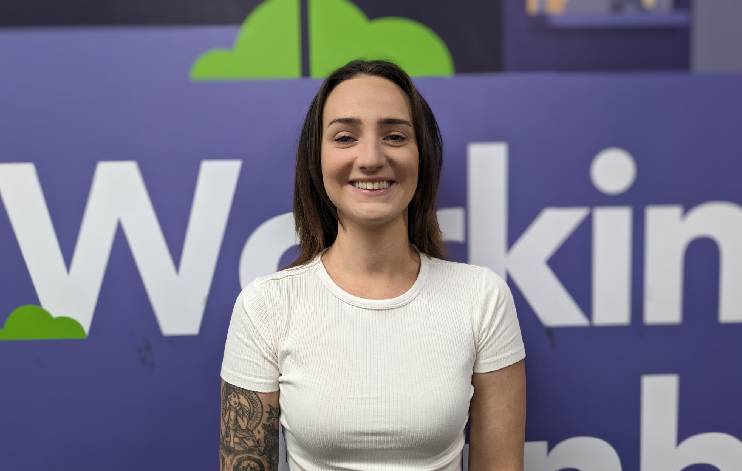10 Helpful Tips to Recruit People with Disability
Published by MAXSolutions on April 28, 2019

People with disability can bring a range of skills, talents, qualifications and abilities to any business.
Yet many companies still don’t fully appreciate the benefit of employing people with disability.
Working with people with disability brings many benefits; they are reliable, they take fewer days off, take less sick leave and can be more loyal than other employees. Employees with disability are also highly productive; in the right job they perform equally as well as other employees.
There are many things you can do to ensure you are inclusive when advertising jobs, throughout the hiring process and during employment.
Here’s 10 helpful tips to recruit people with disability:
1. Finesse your job descriptions
When writing job descriptions, think more about the essential requirements of the job and the result you want from your employee rather than how they’ll get there. All applicants are different and by adjusting your job descriptions you provide flexibility for the applicant to show how they can help get the business results you need.
2. Make your information accessible
Can everyone access your role descriptions and company vision and values? You’re less likely to attract all possible candidates if they can not access information about your company. Make sure all documents are in accessible formats, Microsoft Word has a built-in accessibility checker to ensure that people using screen readers can understand. Find more information about accessible material online here.
3. Allow for interview adjustments
Ask potential employees during the application process if they may need adjustments for the interview. This can include how they find the venue, to support during the interview such as an interpreter, for example. You can also make a commitment to give every applicant with disability an interview. This provides opportunity to demonstrate capacity, beyond what was in the scope of the written application.
Only ask questions about the person’s disability if legitimate and non-discriminatory. More information on illegal interview questions are available if you need a reminder.
4. Create an inclusive environment for all
Not everyone with a disability will disclose it, and they have the right to keep their personal information private. There is no legal obligation to disclose disability unless it affects ability to do tasks described in a role.
If a candidate has disclosed, it’s important to still treat them with dignity and respect and focus on their ability.
5. Encourage flexible work environments
Creating a flexible work environment helps attract a diverse workforce including people with disability. By offering part-time or flexible working hours, employees with disability can work when they know they are most productive. Creating a structure where work can fit in with individual and business need is the first step to an inclusive environment.
6. Adjust the workplace as required
Most people with disability will not need major adjustments to the workplace, if any at all. Those who do require adjustments may be forthcoming about their requirements, but you may also need to ask in an inclusive way.
Common adjustments include changes to work schedule to accommodate appropriate breaks, adjustable desks, and incorporating telephone typewriters (TTY).
You should also assess your workspace for accessibility issues or potential hazards and create equal access to your buildings, meeting rooms, interviews, website, systems and learning and development resources.
7. Keep an open mind
Keeping an open mind by being flexible in the way you think about skills and capacity is important. Look beyond the disability and find the unique qualities the individual brings to your workplace.
8. Consider the culture
There are several days throughout the year that celebrate disability and diversity. Make it a point in your office to acknowledge these days by holding a morning tea or information session. It not only makes those with disability feel included but can offer other staff members a chance to learn and understand.
December 3 is International Day of People with Disability (IDPwD). MAX Solutions Project Manager Gerrard Gossens was Patron in 2018. Find out more about his journey here.
9. Understand disability discrimination
It’s unlawful to disadvantage employees or potential candidates in any way because of their disability. To ensure you understand your rights and responsibilities as an employer check out the Australian Human Rights Commission website.
10. Utilise support offered to you
There is plenty of support available to assist in hiring people with disabilities that won’t cost your business a thing.
MAX Employment provide Employment Assistance Funds (EAF) through the Australian Government Disability Employment Services (DES) for equipment and workplace adjustments including ramps, handrails, sound reduction devices, visual and audible equipment as well as ergonomic furniture. MAX also can conduct a workplace assessment to help employers achieve accessible workplaces.
MAX also assist in recruiting people with disability including professionalrecruitment advise and providing of on the job training.
For more information on our Disability Employment Services or hiring a person with disability, visit maxsolutions.com.au/disability-employment-services.
Share
Tags
Found this useful?
Help and advice
Our blogs are about helping people seek the information that they need for their steps in the workforce.














_1.jpg)





























.jpeg)

















